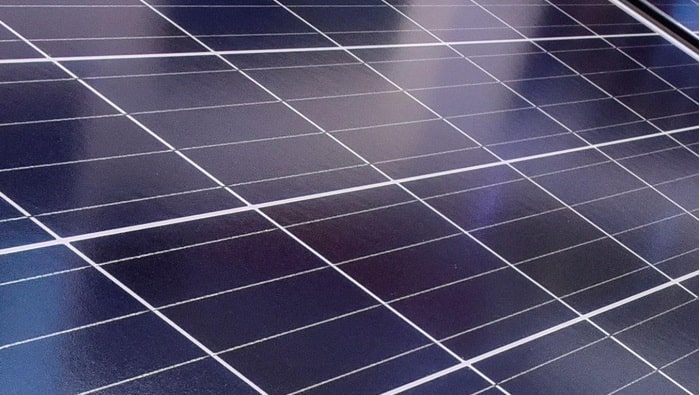Photovoltaics (PV) is booming in Poland. According to SolarPower Europe, 2.2 gigawatts (GW) of solar power was installed in the country in 2020 – nearly three times as much as the 823 megawatts (MW) installed in 2019. This places Poland fourth across Europe, behind Germany (4.8 GW added in 2020), the Netherlands (2.8 GW) and Spain (2.6 GW). So all eyes in the industry are on the up-and-coming Polish market. The solar industry will come together at Intersolar Europe Restart 2021, taking place from October 6 to 8 at Messe München. As part of The smarter E Europe Restart 2021, manufacturers, suppliers, distributors and service providers will all present their products and innovations at the world’s leading exhibition for the solar industry.
All signs point to continued strong growth. An intermediate, more conservative EU Market Outlook forecast from SolarPower Europe expects the Polish solar market to grow by 35 percent annually, meaning that it will have achieved a PV capacity of 8.3 GW by 2024. “PV in Poland is booming at every level – from private and commercial PV rooftop systems to large free-standing installations,” says Dr. Stanislaw Pietruszko, President of the Polish Society for Photovoltaics (PV Poland). According to the PV Poland, the number of registered small-scale systems – those under 50 kilowatts (kW) – with an average capacity of 6.5 kilowatts (kW) grew from 155,000 (992 MW) at the end of 2019 to 457,400 (3 GW) by the end of 2020. These small-scale systems account for 75 percent of all PV capacity installed in Poland. Larger PV projects with a capacity of 4 GW have already been approved for grid connection, further attesting to the forecast growth.
8,000 people employed in the PV industry
Andrzej Kazmierski, Deputy Director of the Department for Low-emission Economy within the Polish Ministry of Economic Development, Labour and Technology, explained in the Intersolar Europe webinar “A Rising Star: PV Market Poland” at the end of March 2021 that the PV market volume in Poland currently amounts to 2.2 billion euros, with 8,000 people employed in the industry. According to Kazmierski, the implementation of the Renewable Energy Directive (RED II) in the EU, intended to promote energy communities and collective prosumers as well as long-term power purchase agreements (PPAs), will be a critical challenge. Renewable energy must be integrated with greater focus into the energy system, and energy management and the grids themselves must be significantly expanded. The government seeks to create a framework for stable market growth as well as to strengthen local value creation.
Government incentive programs in Poland
In addition to drastically reduced PV costs and growing environmental consciousness, the Polish PV market is being advanced by an array of government-funded incentive programs such as My Current (230 million euros) and Clean Air as well as thermo-modernization. The incentive program Agroenergia (50 million euros) is specifically geared toward farmers and offers low-interest loans or direct subsidies for the construction of solar installations with capacities between 50 kW and 1 MW. Incentive programs for net metering have been extended to small and medium enterprises to provide stronger support for prosumers. Solar installations producing less than 50 kW benefit from a lower value-added tax of just eight percent (compared to the typical 23 percent). The acquisition and installation costs can be offset against income, in turn reducing income tax.
Government-funded auctions are also used to finance large-scale facilities, where the government selects operators of systems running on renewable energy who offer the lowest electricity price and funds the construction of their facilities. The winner of an auction back in December was an investment project for the construction of a 200 MW solar park in the Pomeranian Voivodeship.
Companies turn to solar power for self-consumption
Furthermore, Poland is now playing host to larger solar projects that do not rely on subsidies, such as a 64 MW solar farm in Witnica being built on the border to Germany whose electricity will be sold to a cement factory via a multi-year power purchase agreement. A new factory in Konin (Wielkopolska Voivodeship) for battery cathode materials to be used in electric cars will be powered with 100-percent renewable electricity. Plus, large companies are increasingly turning to solar power for self-consumption. For example, a leading manufacturer of metal furniture in Suwalki (Podlaskie Voivodeship) in northeastern Poland has recently started meeting its demand using a 2 MW roof-mounted and free-standing installation on the company premises.
Intersolar Europe Restart 2021 presents products and innovations
Visit Intersolar Europe Restart 2021 from October 6 to 8 at Messe München to learn more about developments, products and applications in the areas of photovoltaics, solar thermal technologies, solar power plants, grid infrastructure and solutions for the integration of renewable energies. Manufacturers, suppliers, distributors and service providers will all gather at the solar industry’s most important meeting point to present their products and innovations. A recording of the webinar “A Rising Star: PV Market Poland” as well as slides from the presentation can be downloaded here .





































